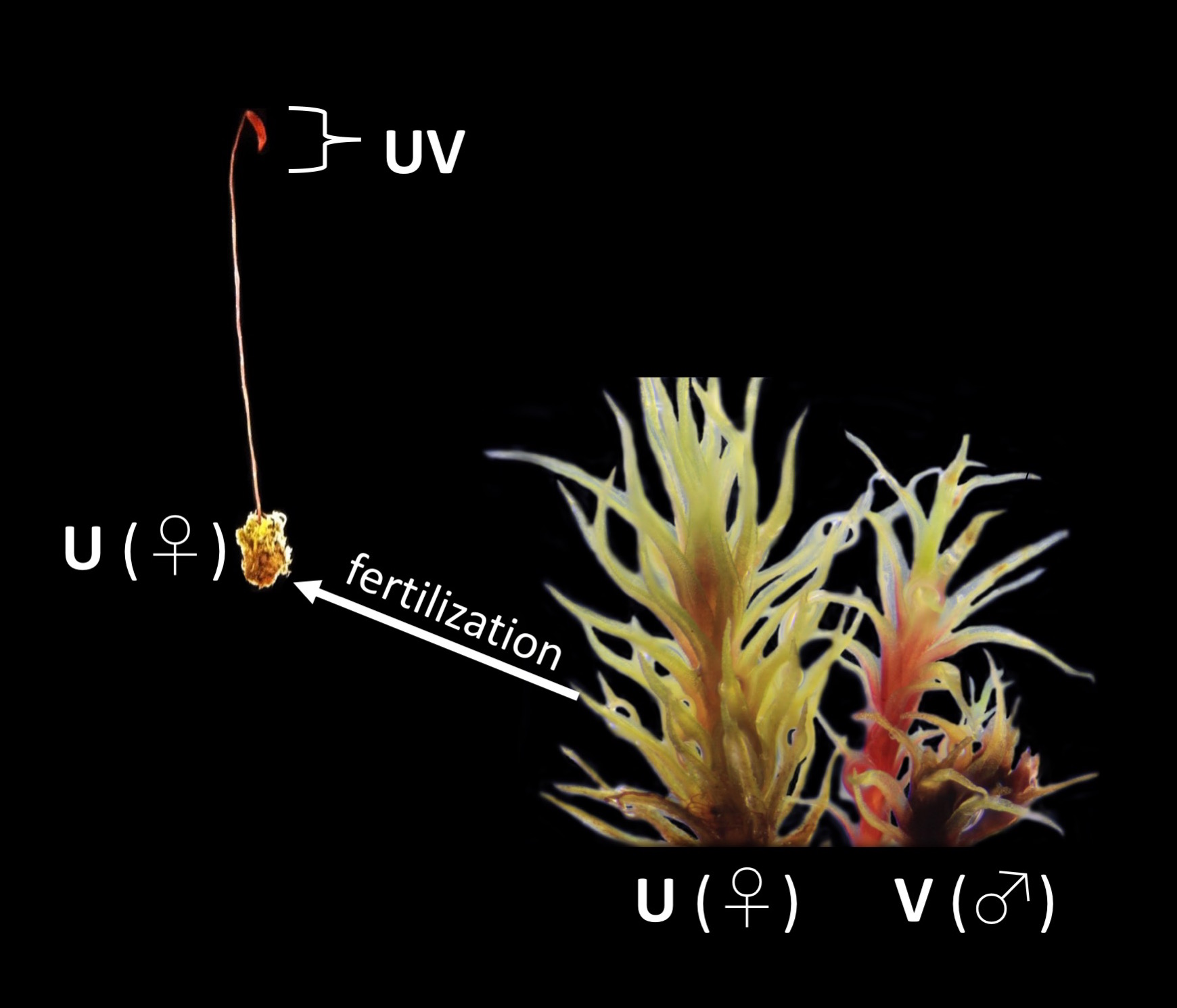Sarah Carey

plant genomics | evolutionary genetics | sex chromosome evolution
Research
Sex chromosome evolution across plants
The evolution of dioecy and sex chromosomes has occured hundreds of independent times across land plants. With my postdoctoral work I am using genomic techniques to characterize sex chromosomes, and their gene content, across many of these evolutions. Here’s a recent review we wrote on what has been found so far about sex chromosomes in land plants using whole-genome sequencing approaches. More to come as projects progress!
Sex chromosomes in bryophytes

My dissertation work used transcriptomic and genomic data to address the evolution of sex chromosomes, differences in gene expression, and patterns of molecular evolution and genetic variation in the bryophytes. This work largely focused on the moss Ceratodon purpureus whose genome was sequenced by the Joint Genome Institute (see section on Ceratodon purpureus genome project).
Mosses are haploid dominant and around 60% of the roughly 13,000 species have separate sexes. The sex chromosomes underlying the separate sexes are also haploid and are called UV sex chromosomes, where the U correlates with females and the V with males. The U and V sex chromosomes only meet in the monomorphic, non-sexed, diploid stage (called a sporophyte) after fertilization and segregate into females and males after meiosis. In Ceratodon purpureus the UV sex chromosomes make up ~1/3 of the 360 megabase genome and contain over 3,400 genes each.
Our manuscript for the Ceratodon purpureus genome and analyses of the UV sex chromosomes was recently published in Science Advances (Carey et al., 2021).
Hear our JGI Genome Insider podcast on the Ceratodon purpureus genome project.
And read write-ups of our findings on UV sex chromosomes in Ceratodon purpureus from HudsonAlpha and the University of Florida College of Liberal Arts and Sciences.
If you’re interested in using the chromosome-scale V1 Ceratodon purpureus genomes, they can be found on Phytozome. GG1 is the female isolate with a U chromosome and R40 is the male isolate with a V chromosome
Flagellate Plant Phylogeny (GoFlag)
I am also a collaborator of the GoFlag project, the ultimate goal of which is to build a comprehensive phylogeny of all flagellate plants (that is, plants with flagellated sperm), which include mosses, liverworts, hornworts, lycophytes, ferns, and gymnosperms. As a graduate research assisant on the project I helped to organize sample submissions, optimize DNA extractions, train undergraduates on molecular lab work, and analyze Capture-seq data. Our pilot paper, describing the GoFlag Probe Set was recently published.